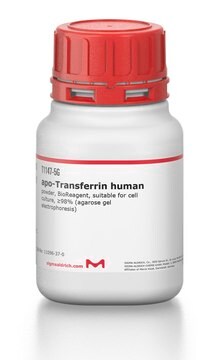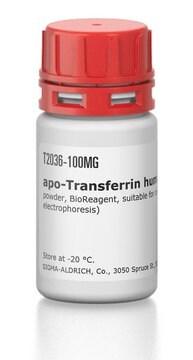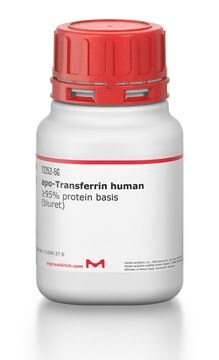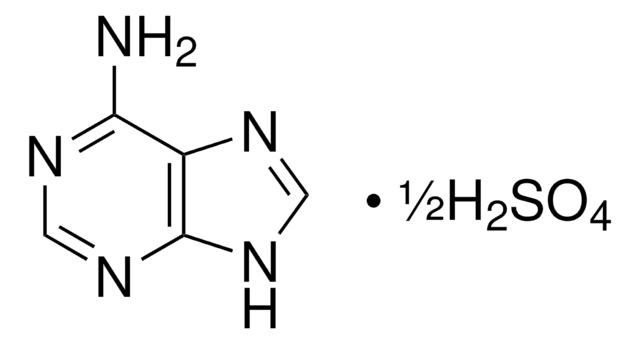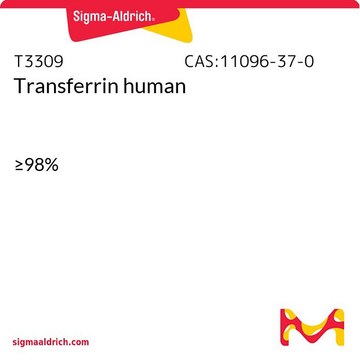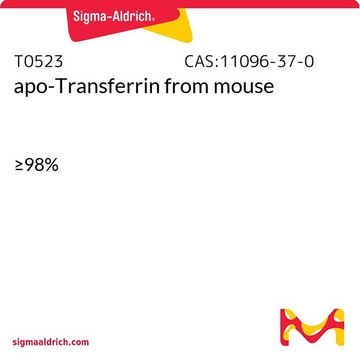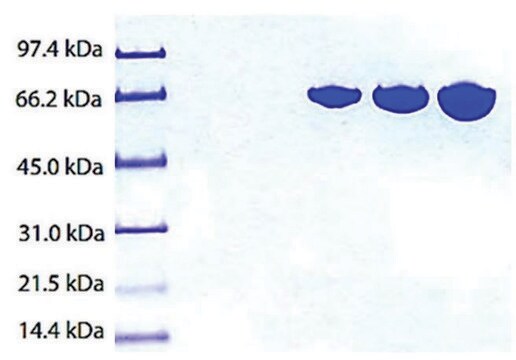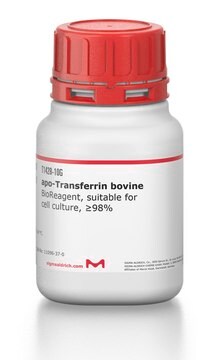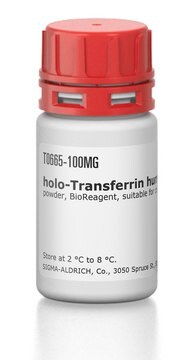T4382
Apo-transferrina human
powder, ≥98% (agarose gel electrophoresis)
Sinónimos:
Siderofilina, Transferrina humana
About This Item
Productos recomendados
biological source
human
Quality Level
assay
≥98% (agarose gel electrophoresis)
form
powder
mol wt
76-81 kDa
Iron content
≤0.005%
technique(s)
cell culture | mammalian: suitable
impurities
HIV and HBsAg, source material tested negative
solubility
H2O: 50 mg/mL
UniProt accession no.
shipped in
wet ice
storage temp.
−20°C
Gene Information
human ... TF(7018)
¿Está buscando productos similares? Visita Guía de comparación de productos
General description
Application
- to determine the competitive binding of bismuth to albumin and transferrin by fast performance liquid chromatography (FPLC)
- to study titanium-transferrin complex by electrochemical method
- in the preparation of transferrin solution and in the formation of conjugates with ruthenium-complexes for cellular viability studies
Biochem/physiol Actions
Other Notes
Linkage
Disclaimer
Storage Class
11 - Combustible Solids
wgk_germany
WGK 3
Certificados de análisis (COA)
Busque Certificados de análisis (COA) introduciendo el número de lote del producto. Los números de lote se encuentran en la etiqueta del producto después de las palabras «Lot» o «Batch»
¿Ya tiene este producto?
Encuentre la documentación para los productos que ha comprado recientemente en la Biblioteca de documentos.
Los clientes también vieron
Artículos
How transferrin and other cell culture components affect the performance of serum-free, protein-free cell culture systems used for biomanufacturing heterologous proteins including monoclonal antibodies. The page introduces the in vitro chemistry and biochemistry of transferrin.
Nuestro equipo de científicos tiene experiencia en todas las áreas de investigación: Ciencias de la vida, Ciencia de los materiales, Síntesis química, Cromatografía, Analítica y muchas otras.
Póngase en contacto con el Servicio técnico